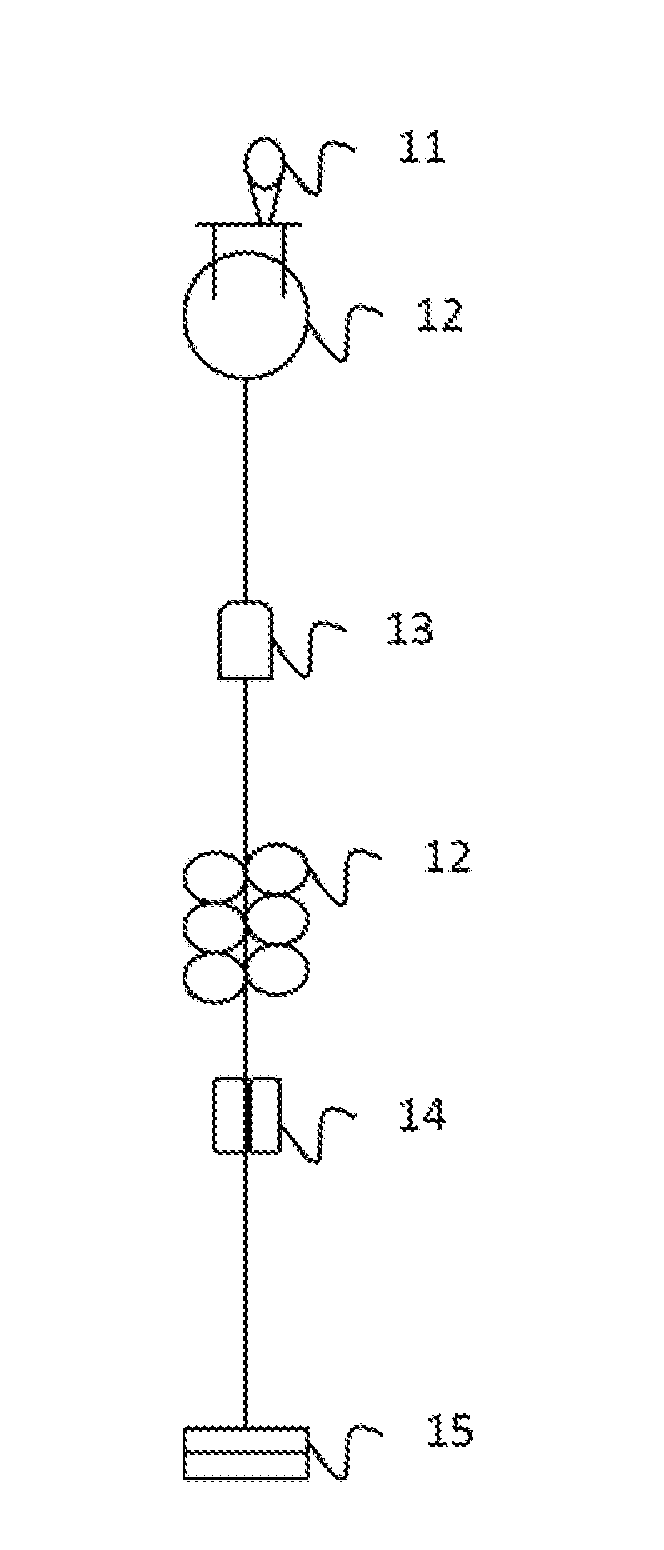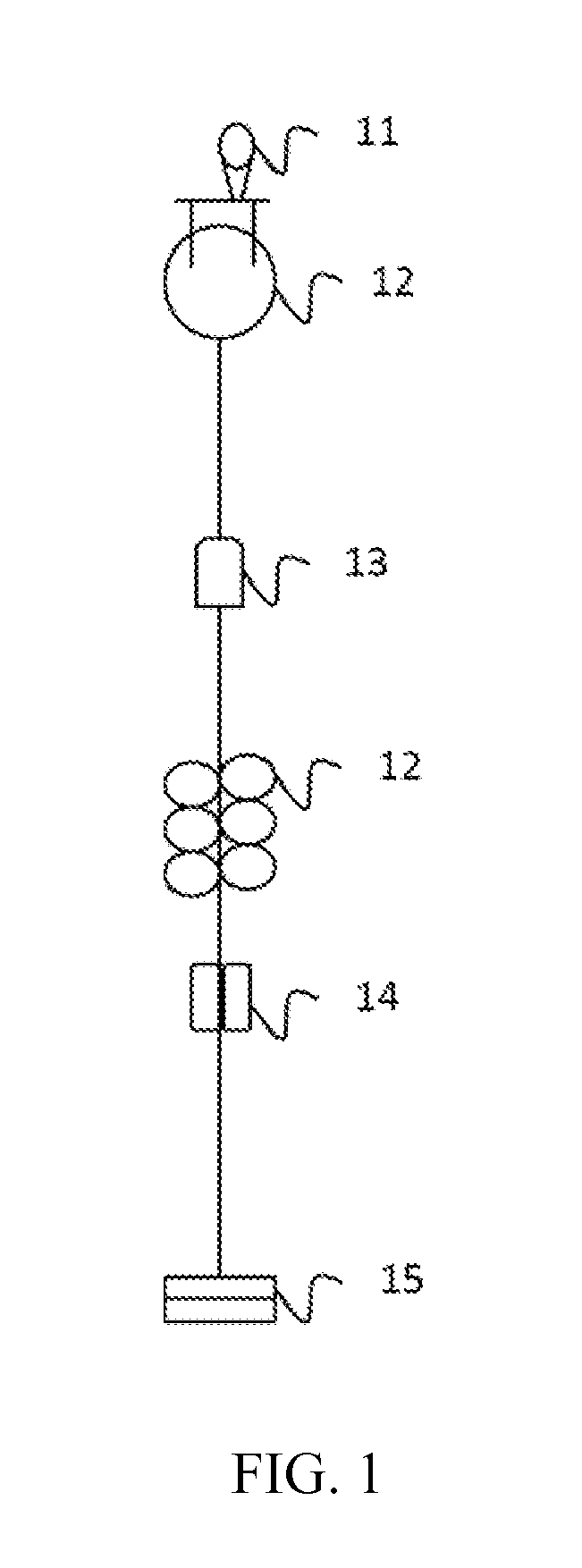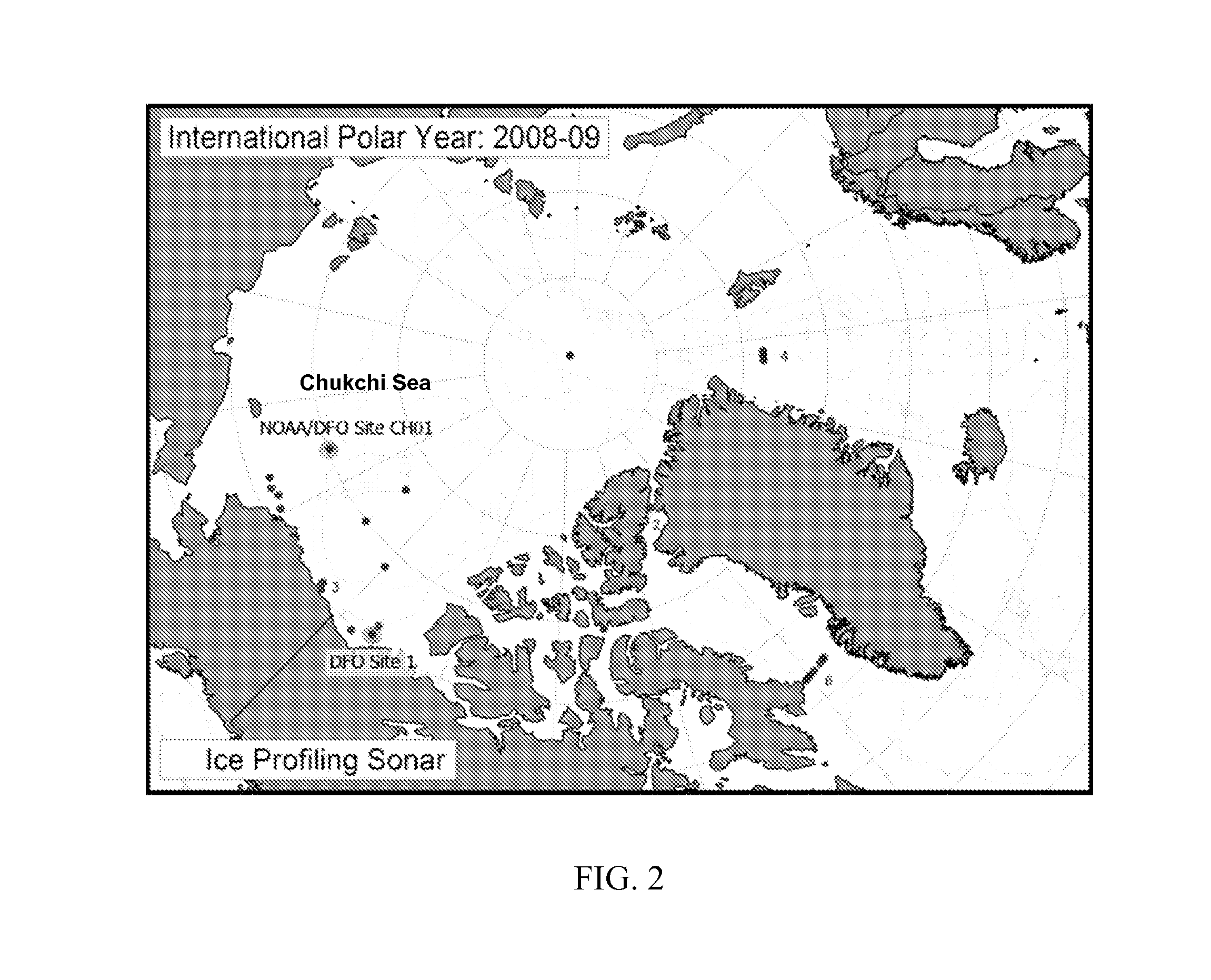Ice keel prediction from sar, optical imagery and upward looking sonars
a technology of optical imagery and ice keel, which is applied in the direction of instruments, measurement devices, and using reradiation, can solve the problems of sar imagery sea ice thickness data not finding much use in the oil and gas industry, and the rcs value is distorted
- Summary
- Abstract
- Description
- Claims
- Application Information
AI Technical Summary
Benefits of technology
Problems solved by technology
Method used
Image
Examples
example
[0086]Tables 1 and 2 display ice draft measurements taken for Site I during Winter 2008-09 and 2009-10, respectively.
TABLE 1Winter 2008-09 (Lat: 70°59.972N; Lon: 165°0.073W)Date / TimeMax Draft (m)Mean Draft (m)4 / 30 11:0226.4216.095 / 8 13:2626.1814.455 / 11 2:1125.8315.734 / 30 22:5824.8416.895 / 12 0:4624.7118.296 / 30 5:0523.6614.974 / 1 13:4922.9915.915 / 10 14:4222.7113.676 / 25 1:0422.6315.615 / 15 1:3421.9913.04
TABLE 2Winter 2009-10 (Lat: 70°59.9510N; Lon: 165°0.134W)Date / TimeMax Draft (m)Mean Draft (m)3 / 12 2:1426.6715.184 / 22 13:2226.2518.895 / 10 10:3225.1816.623 / 6 17:2624.0617.115 / 5 15:3323.718.226 / 1 8:4122.5112.094 / 22 14:0322.4715.043 / 6 9:1722.1714.793 / 16 22:2621.6713.664 / 29 4:0621.5115.25
[0087]Processing ULS Data: Measurements were collected every 12 hrs from Sep. 9, 2008 until Aug. 28, 2009 by an Ice Profiling Sonar (IPS) ULS and ADCP moored at Site I, located at Lat: 70°59.972N; Lon: 165°0.073W. The data was processed using the Ice Profiling Sonar Processing Toolbox for Matlab, which is prov...
PUM
 Login to View More
Login to View More Abstract
Description
Claims
Application Information
 Login to View More
Login to View More - R&D
- Intellectual Property
- Life Sciences
- Materials
- Tech Scout
- Unparalleled Data Quality
- Higher Quality Content
- 60% Fewer Hallucinations
Browse by: Latest US Patents, China's latest patents, Technical Efficacy Thesaurus, Application Domain, Technology Topic, Popular Technical Reports.
© 2025 PatSnap. All rights reserved.Legal|Privacy policy|Modern Slavery Act Transparency Statement|Sitemap|About US| Contact US: help@patsnap.com



